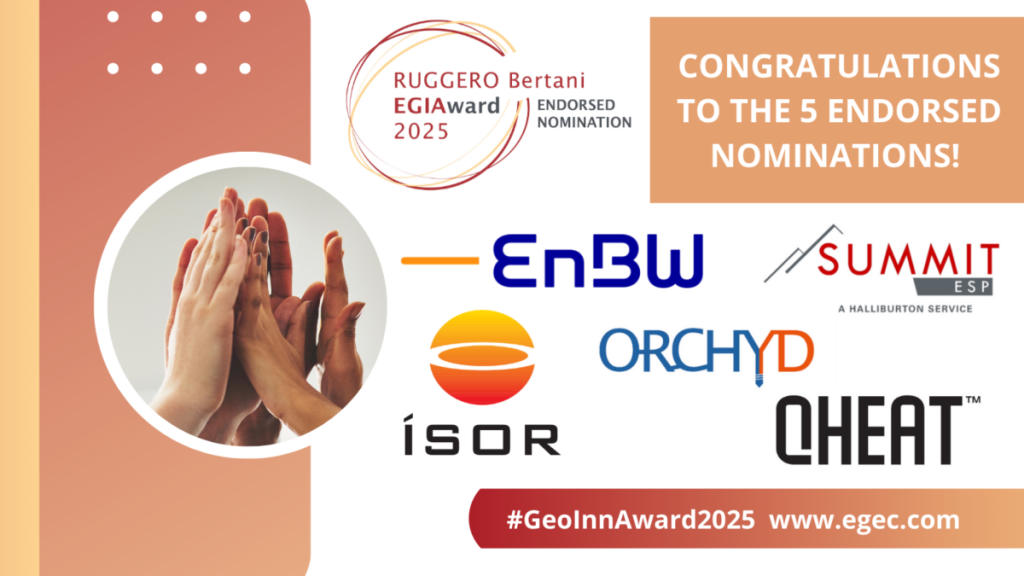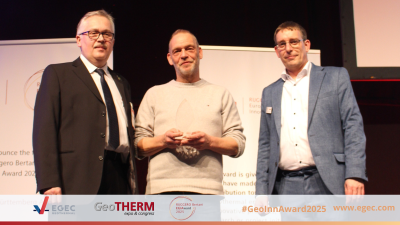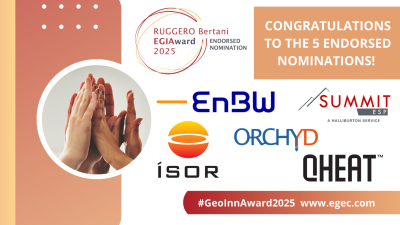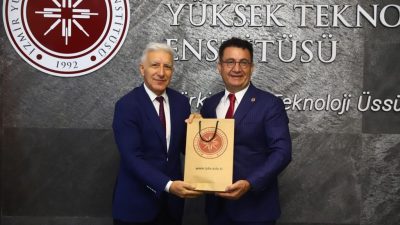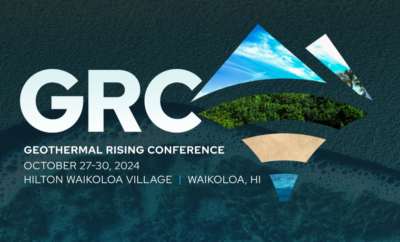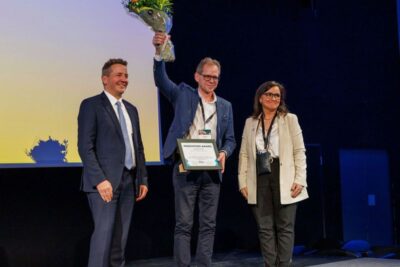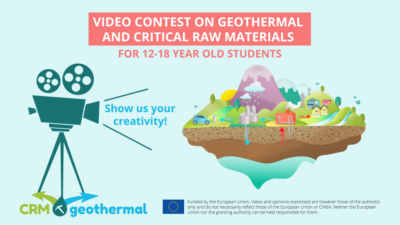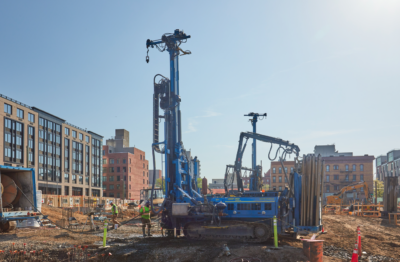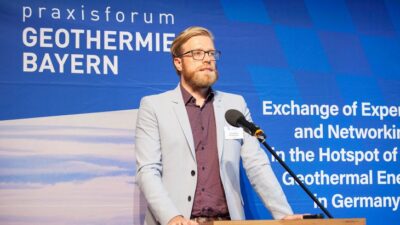EGEC announces nominations for 2025 Ruggero Bertani geothermal innovation award
The European Geothermal Energy Council has announced the five exceptional projects nominated for the 2025 Ruggero Bertani Geothermal Innovation Award.

The European Geothermal Energy Council (EGEC) has announced the five exceptional nominees for the Ruggero Bertani European Geothermal Innovation Award 2025. The winner will be announced at the GeoTHERM expo & congress, taking place between 20 and 21 February in Offenburg, Germany.
Given every year, the Ruggero Bertani European Geothermal Innovation Award (EGIA) is bestowed upon companies which have made an outstanding contribution towards the field of geothermal energy in the form of innovative products, scientific research or project initiatives. Last year’s EGIA was awarded to Vulcan Energy for their Lithium Extraction Optimization Plant (LEOP), which extracts lithium chloride from geothermal brine which is eventually converted to battery-grade lithium hydroxide.
“We extend our heartfelt congratulations to the five exceptional nominees for the Ruggero Bertani European Geothermal Innovation Award 2025. These pioneering projects exemplify the innovation, ingenuity, and commitment needed to drive geothermal energy forward as a cornerstone of sustainable energy systems in Europe and beyond. Each finalist has contributed groundbreaking solutions that highlight the potential of geothermal technology to address pressing global energy challenges,” said Philippe Dumas, EGEC Secretary-General.
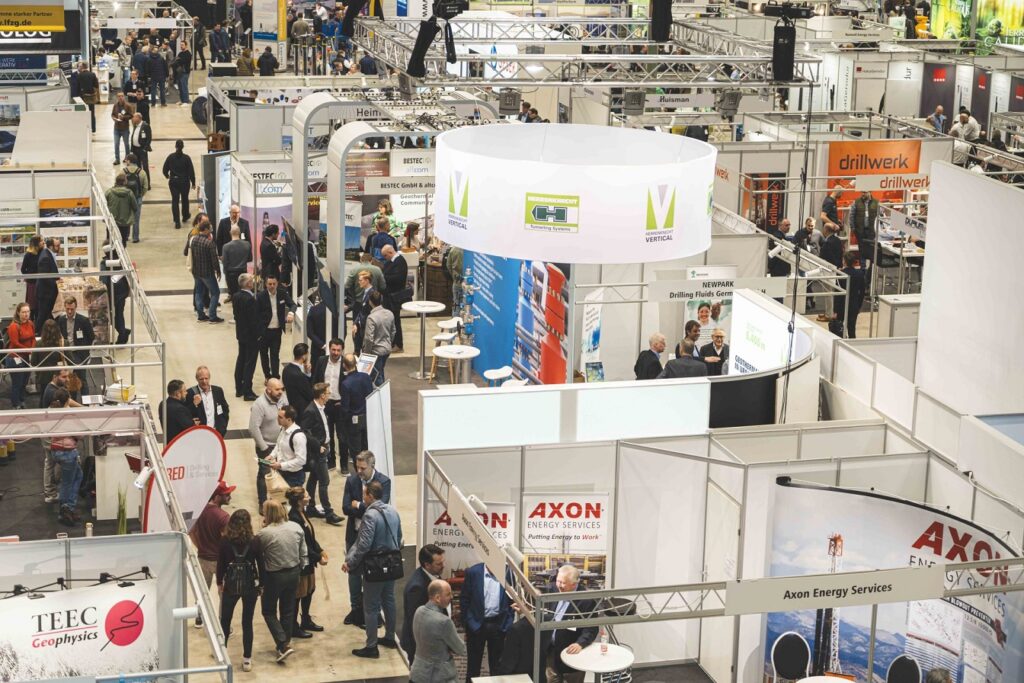
The finalists and their entries are the following:
Energie Baden-Württemberg (EnBW) – CASCADE
CASCADE is a new process scheme that addresses the high amount of energy and water needed by current Al-based processes for lithium extraction from geothermal brine. By using a second reactor with a Ti-/Mn-based adsorbents, the process of water can be recycled, and the energy and transportation effort is significantly reduced. Meanwhile, the purity of the second pre-product is sufficiently high to produce solid lithium salt on-site using established processes. CASCADE is a patented technology (patent number 102023118 084.3).
Halliburton – Truesync PMM: Geothermal Electric Submersible Pump (GeoESP) Motor
The TrueSync 738 series hybrid PMM revolutionises electric submersible pump (ESP) technology for geothermal applications, offering a blend of high performance and robust durability. TrueSync’s originality lies in its hybrid design, which ingeniously combines elements from traditional induction motor technology to overcome the limitations faced by standard permanent magnet motors. This innovation extends the operational life of ESP systems and stabilizes their performance in extreme conditions.
Iceland GeoSurvey (ISOR) – Flexible Coupling
The novel patented technology of Flexible Couplings has been in development within ÍSOR – Iceland GeoSurvey. Flexible Couplings are designed to mitigate casing failures in production casings of high-temperature geothermal wells, that are caused by constrained thermal expansion. By implementing Flexible Couplings in the production casing, each casing joint (around 12 m) is allowed to expand. Thermal straining of the casing is prevented, and the risk of casing failures is minimized, thereby increasing the reliability of wells. A batch of Flexible Couplings was delivered to ON Power, a subsidiary of Reykjavik Energy, in the fall of 2024 to be used in their next well drilled in Nesjavellir, Iceland, in January-March 2025.
Mines Paris (PSL Univeristy) – ORCHYD
ORCHYD was an H2020 project funded by the European Commission with the goal of building a prototype drilling tool that showcases an improvement of at least 4X in penetration rate compared to conventional rotary techniques while drilling deep geothermal wells. It was mainly aimed at drilling hard crystalline rocks like granites, usually found in depths beyond 4km.
The originality of the project comes from creating a fully fluid driven down the hole (DTH) system combining two mature rock breaking technologies – percussion drilling and high-pressure water jetting (HPWJ).
QHeat – Integration of Heating and Storage Wells to Waste Burning Facility
This project focuses on the use of Coaxial Reversible Medium-Deep Geothermal Heat Wells (MDGHWs) for a waste-to-energy facility in Finland. This innovative geothermal solution provides both heating and cooling for the facility while storing excess thermal energy for later use. While the primary focus is on waste-to-energy, the technology’s potential for cooling applications in data centres remains a concept for the future.
This project is original because it combines two innovative approaches: the use of Coaxial Reversible Medium-Deep Geothermal Heat Wells (MDGHWs) for geothermal heat extraction and storage, alongside the integration of waste heat from a biomass plant. The MDGHWs are designed to operate at deeper geothermal depths (1,000-2,000 meters), enhancing thermal extraction efficiency compared to traditional geothermal systems.
Source: EGEC
